Last updated: July 20, 2022
Article
The Sierra Nevada Monitor: Spring 2022
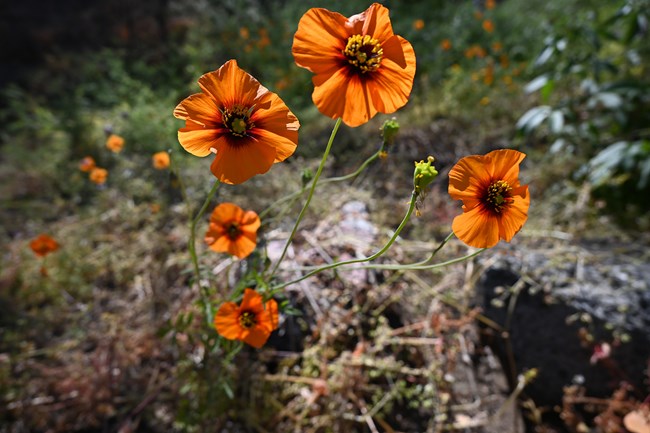

What's new? Learn about resource management, monitoring, and research projects.
Are you curious about some of the resources management, monitoring, and research projects going on in Sierra Nevada Network (SIEN) parks? At a March 30th virtual meeting, scientists and managers from our network parks, SIEN staff, and the local USGS field stations presented lightning talks on a variety of topics. Examples included: disappearing glaciers in Yosemite, LiDAR use to evaluate forest condition, bird monitoring trend results, restoring cultural burning to Yosemite Valley, responses to impacts of higher-severity fires, a study of copper and its impacts in the Upper Tokopah watershed in Sequoia, and more! A big thank you to the many presenters, who enthusiastically shared their work.
Catch the recordings at our Sharepoint site! (available to National Park Service and other Department of Interior employees only). You’ll also find a link to “Last of the Monarchs”, a video about loss of large sequoias and restoration efforts underway, developed by Garrett Dickman, Botanist, Yosemite National Park, in partnership with a private media company.
SIEN staff coordinated the meeting, with facilitation and technical support from Kass Bissmeyer, Program Assistant, Natural Resources Stewardship and Science, Biological Resources Division, and help from Christie Hendrix, Visual Information Specialist at Sequoia and Kings Canyon National Parks.
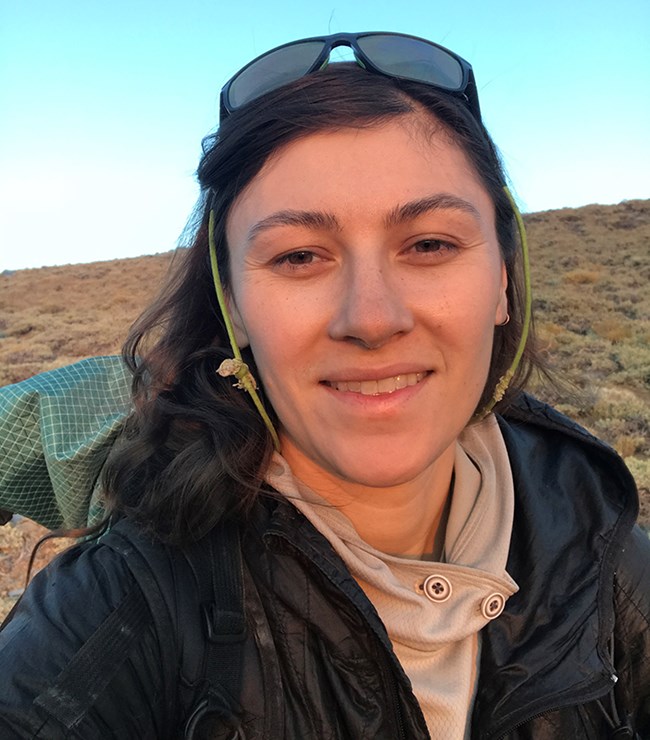
Staffing Updates
Welcome Erika Blomdahl, Ecologist
Erika Blomdahl comes on-board as the new Sierra Nevada Network Ecologist in early July. The ecologist manages our high elevation forest and wetlands monitoring projects, so Erika will help oversee the forest monitoring field work this summer.
Erika is pursuing her PhD in Ecology from Utah State University. Her dissertation explores disturbance regimes, their climatic drivers, and disturbance interactions across montane and subalpine forests of western North America. She is also a Fellow in the Climate Adaptation Science program at USU and is involved in research on the social dimension of fire in California.
Previously, Erika coordinated the development of the Utah Fire Atlas, a state-funded project to improve monitoring of trends in wildland fire across the state. Her master’s work explored fire refugia and endangered species habitat in the southern Sierra. She has also managed a forest dynamics lab, and has spent many seasons in the field and camping throughout the West. When she is not learning about forests, Erika thoroughly enjoys trail running, backcountry skiing, yoga, reading, and gardening.
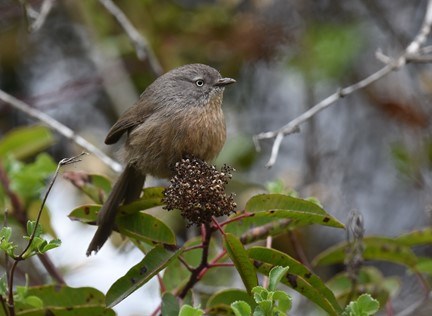
Photo by Andy Reago and Chrissy McClaren, Flickr, CC BY 2.0.
New Publications and Reports
First Synthesis Report of Landbird Trends in Sierra Nevada Network Parks Published!
After nearly a decade of monitoring bird populations in Sierra Nevada Network parks with our partners at The Institute for Bird Populations (IBP), we now have our first report of trends in bird abundance between 2011 and 2019. Out of 166 species encountered on transects, 62 were detected frequently enough to support estimates of detection probability and trend. In general, report authors documented relative stability of bird populations, however, a number of species exhibited either increasing or decreasing population trends. The full report citation (with download link) is:
Ray, C., R. L. Wilkerson, R. B. Siegel, M. L. Holmgren, and S. A. Haultain. 2022. Landbird population trends in parks of the Sierra Nevada Network: 2011–2019 synthesis. Natural Resource Report NPS/SIEN/NRR—2022/2402. National Park Service, Fort Collins, Colorado. https://doi.org/10.36967/nrr-2293643.
Different patterns of trends emerged related to park. While the total number of supported trends for bird species densities between Sequoia & Kings Canyon National Parks (SEKI) and Yosemite National Park (YOSE) were similar, the general direction of trends differed. Devils Postpile National Monument (DEPO), much smaller in size, had more positive than negative trends:
- SEKI had 23 supported trends – 6 positive and 17 negative
- YOSE had 22 supported trends – 20 positive and 2 negative
- DEPO had 5 supported trends – 4 positive and 1 negative
While further analysis is ongoing to identify the factors associated with the difference in trend patterns among these parks, it is worth noting that Sequoia & Kings Canyon are the southernmost parks in the network, and experienced more severe drought than the parks located in the northern part of our network.
A variety of species had positive or negative trends in population density during this time period. Statistically supported positive trends occurred for Dusky Flycatcher and House Wren in all network parks, and for Red-breasted Nuthatch, Dark-eyed Junco, Lazuli Bunting, and Green-tailed Towhee in both SEKI and YOSE. Statistically supported negative trends common to more than one park occurred for Western Wood-Pewee and Pine Siskin for both SEKI and YOSE. Three species―White-breasted Nuthatch, Hermit Thrush, and Hermit Warbler―declined in SEKI while increasing in YOSE.
Modeling the effects of mean spring temperature and precipitation-as-snow on bird abundance suggests reduced snow cover may play an important role in the recent — and perhaps ephemeral — stability of landbirds within the SIEN national parks. Authors hypothesize that earlier snowmelt might allow earlier access to breeding habitats by more birds, perhaps increasing productivity and subsequent density of breeding bird populations during surveys in the following year. Another possibility is that late-lasting snow correlates with early-season adverse weather that might result in widespread nest failures, again affecting breeding site selection and bird densities.
Tracking changes in multiple species across the varied habitats of our network parks is inherently challenging – from field data collection to the complex analytical methods used to identify and understand patterns. These results tell us that our methods are effective at detecting trends in bird populations – and that change is occurring. We will be watching to see what additional years of monitoring and analysis tell us about longer term trends in these populations.
A Giant Loss: Losing sequoias could be a blow to Sierra Nevada birds
Changing climate and forest structure have led to high intensity fires that threaten even fire-adapted giant sequoias. Our bird-monitoring partners at The Institute for Bird Populations (IBP), Rodney Siegel and Bob Wilkerson, recently published an article in The Wildlife Professional, a magazine produced by The Wildlife Society. The article describes how giant sequoia groves in Sequoia and Kings Canyon National Parks are suffering uncharacteristically heavy losses due to fire. Many years of data quantifying bird densities show sequoia groves may be the “birdiest” forests in these parks. In addition to being valuable songbird habitat today, giant sequoias historically provided nesting sites for California Condors in some areas of their range. You can read the article via the IBP’s blog here: A Giant Loss: Losing sequoias could be a blow to Sierra Nevada birds.
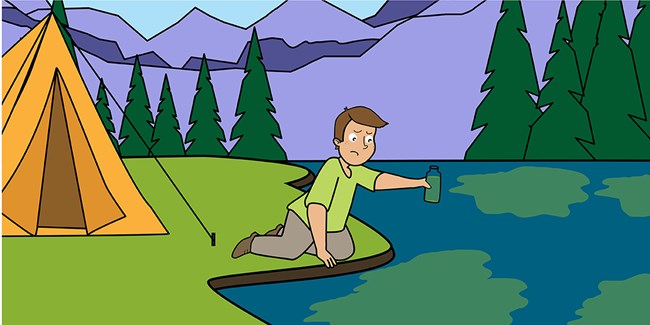
Image produced by Frontiers for Young Minds journal to accompany lake nutrients article.
Taking the Pulse of US National Parks - Frontiers for Young Minds
The Inventory & Monitoring Division (IMD) is publishing articles about monitoring projects and science concepts in the Frontiers for Young Minds journal that targets youth from ages 8 through 15. Young people participate as reviewers of submitted articles. The Inventory & Monitoring collection of articles is called Taking the Pulse of US National Parks. Four IMD staff served as editors for this collection – Nina Chambers, Sonya Daw, Erin Shanahan, and Rebecca Weissinger.
Many other I&M staff participated as writers of articles, including three of us from the Sierra Nevada Network. We enjoyed this opportunity to reach younger audiences, and also loved responding to and reading about our young reviewers. See links to the two most recent articles with SIEN staff as co-authors:
Heard, A. M., J. O. Sickman, and L. S. Mutch. 2022. Nutrients in mountain lakes: How much is too much? Front. Young Minds. 10:716512: 10.3389/frym.2022.716512
Roche, A., E. Shanahan, and J. Nesmith. 2022. Trouble in the forest: Whitebark pine trees, mountain pine beetles, and climate change. Front. Young Minds. 10:678082.doi: 10.3389/frym.2022.678082.
Field Season 2022
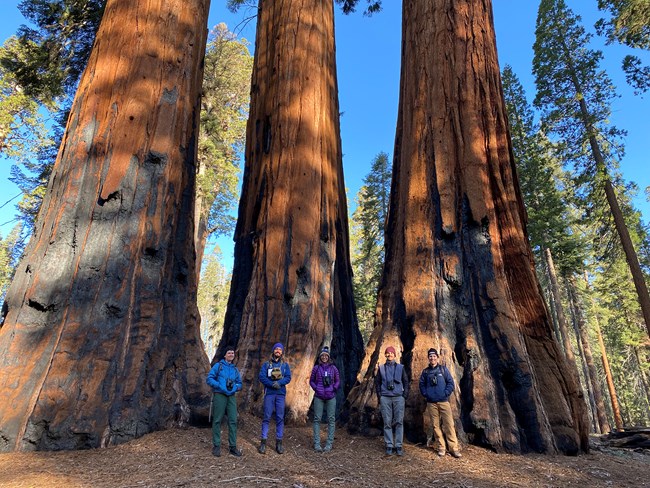
NPS / Sylvia Haultain
Birds
As we pass the solstice, our Institute for Bird Population (IBP) field crews are already nearing the half-way point of their season. Lee Bryant returned as the Sequoia and Kings Canyon National Parks (SEKI) crew lead this year, working with Juniper Cook to reach as many remote transects as possible. Lee put her trip planning skills to work, crafting the itineraries for both the Sequoia & Kings Canyon and Yosemite (YOSE) crews. She and Juniper have already visited transects in the depths of the Kern Canyon, setting a record for early season access when they crossed over a nearly snow-free Franklin Pass, the lower reaches of the Monarch Divide, and Giant Forest. In Yosemite, Fen Conway is new to SIEN as the crew lead. They are joined by Matt Zucconi, who is spending his first summer in the Sierra. All four of the field crew members bring extraordinary skills this year – they are some of the best birders we’ve had the pleasure to work with and have already been making significant contributions to knowledge of Sierran birds. We are also delighted to welcome IBP senior staff members Rodney Siegel, Dayna Mauer, and Bob Wilkerson as they pick up a handful of transects in SEKI, YOSE, and all the points in Devils Postpile National Monument. We couldn’t do this without them!
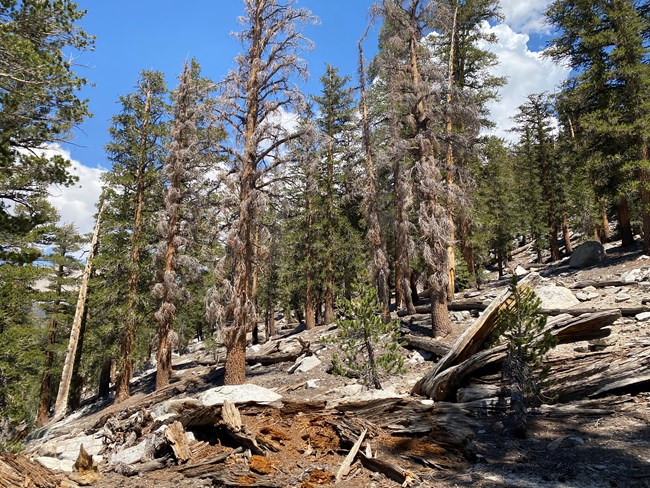
NPS / Sean Auclair
High Elevation Forests
After another successful Antarctic ‘summer’ (and some fun packrafting in New Zealand), Sean Auclair and Emma Kahle are back in the Sierra to monitor the health of subalpine trees. They are joined by a third crew member this year, Ana Tobio. Ana spent last fall at Sequoia & Kings Canyon and Yosemite as a Scientist in the Parks intern working on assessing giant sequoia health – a task made more urgent (and complicated) by the 2021 KNP Complex fire. Ana lives in Bishop, is an avid climber, hiker, and reader, and we are very pleased to have her on our team this season. We are also grateful to Monica Buhler, Devils Postpile National Monument Resource Management Specialist, who has continued to support the crew as we anticipate the arrival of incoming Ecologist Erika Blomdahl in early July.
Things are changing in the subalpine, and in response, our forest monitoring efforts are branching out beyond our plot network. Together with USGS Ecologist Adrian Das and Regional Plant Ecologist Brent Johnson, we successfully competed for Regional Block funds to address what appears to be drought related die-off in a remote whitebark pine population in Kings Canyon National Park (see article in our Fall newsletter). In August we will host a site visit by US Forest Service Forest Pathologists Beverly Bualon and Martin MacKenzie, Sierra Nevada Network (SIEN) Ecologist Erika Blomdahl, US Geological Survey (USGS) Ecologist David Soderberg, and Yosemite Ecologist Kimiora Ward to assess the cause of the die-back. This will help us design a study using remotely sensed and plot level data to document the extent of the mortality in 2023. In the meantime, our SIEN forest crew will continue to survey whitebark and foxtail pine throughout the network parks as part of our regular monitoring.
This spring brought another unwelcome surprise, in the form of what appears to be beetle and white pine blister rust impacts to foxtail pine in the Mineral King and Rock Creek areas of Sequoia National Park. Keven Griffen, who has previously worked in the field with SIEN and the Sequoia & Kings Canyon Naitonal Parks Plant Ecology program, will spend a brief season here helping us document these impacts, and will also collect samples of whitebark pine needles to contribute to a region-wide genetics study.
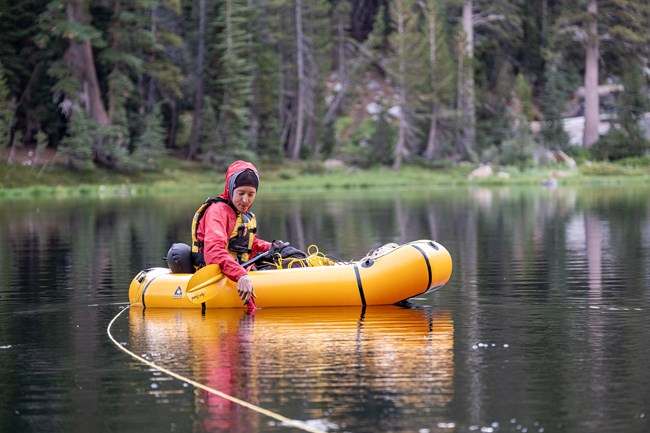
NPS / Dustin Garrison
Lakes
The 14th field season of lake monitoring has arrived! After a year off, we are excited to get back on the water! Two crews, one based in Sequoia and Kings Canyon (SEKI) and one based in Yosemite (YOSE), will travel to 25 lakes all across the network. The SEKI crew will be led by Kelly Bessem, a 2019 lakes crew member, and Claire Stellick joins us for her first SIEN lake season. Kelly and Claire are working with SIEN as partners through the Great Basin Institute. The Yosemite crew is composed of Liz Neudeck (lead) and Morgan Baker, Yosemite Physical Sciences and Landscape Ecology employees. Annually, crews collect data on a suite of measures to monitor water chemistry and amphibians.
Our lake monitoring provides managers with a snapshot of current lake resource condition and long-term trends. In 2021, we completed our first trend analysis and are currently working on interpreting results and conducting follow-up analyses. We also recently published an article entitled “Nutrients in Mountain Lakes: How Much is Too Much?” in Frontiers for Young Minds, a journal for kids that engages them in the scientific peer-review process (see link in "Taking the Pulse of National Parks" article). Nutrients from agricultural, mobile (vehicles), and industrial sources throughout California drift into the parks via air currents. When deposited in high elevation areas, these nutrients can contribute to increased algal growth in remote mountain lakes.
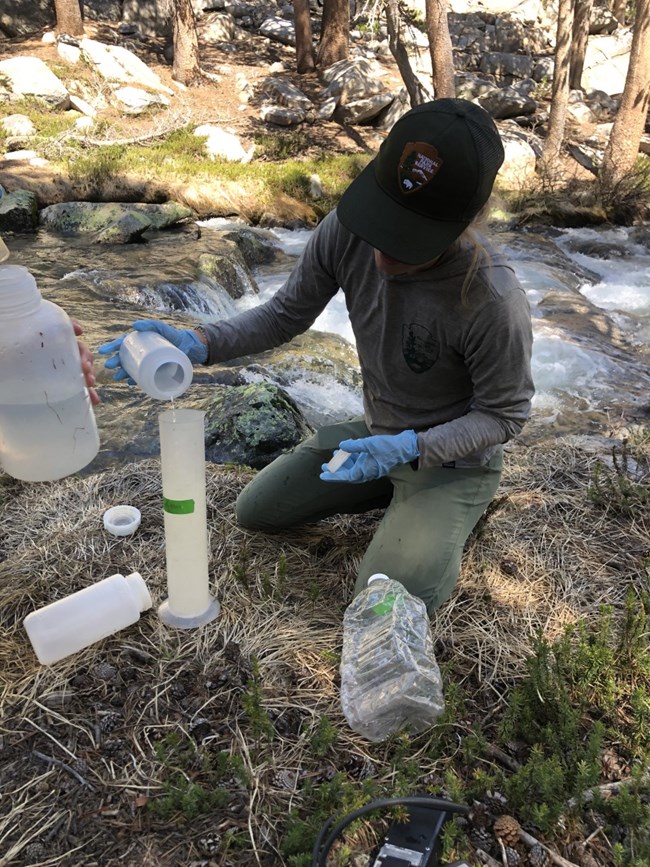
NPS / Rachel Hallnan
Rivers
SIEN, YOSE, and Devils Postpile National Monument (DEPO) work collaboratively to measure streamflow at three river gaging stations on the Tuolumne River and the Middle Fork of the San Joaquin. YOSE Resources Management and Science staff, Rachel Hallnan (Hydrologist) and Physical Science Technicians Annalise Decker and John Deane will be measuring streamflow this summer at the three YOSE sites. This season, they have completed one visit to each of these sites. Paul Honeywell, Hydrologic Technician with the USGS California Water Science Center, will measure streamflow along the San Joaquin in DEPO.
The Sierra Nevada Network River Hydrology Monitoring Protocol reports on streamflow data from 14 gages in and near SIEN parks. The additional eleven gages are operated by cooperators and data are shared with SIEN annually.
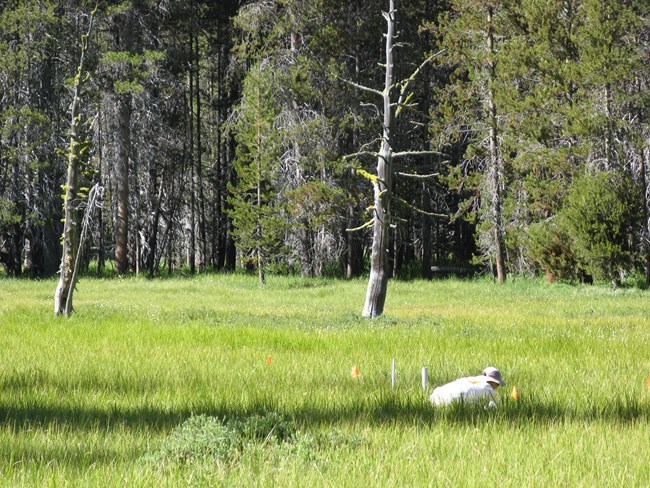
Wetlands
Kelly Bessem and Claire Stellick, our lake monitoring crew, will be assisting with wetland projects this year. In June and July they will be in Yosemite removing wells installed in pilot monitoring plots that are no longer in use. Their work is greatly appreciated, as it reduces our impact on the wilderness.
SIEN’s Water Monitoring Lead, Connor Gallagher, has been assisting with lake crew training and starting off the well removal trips in Yosemite. Additionally, he continues to work through a backlog of wetland groundwater data, uploading and correcting the data to a global online database.
With the Ecologist position vacant during the normal Spring planning period, wetlands monitoring will be greatly reduced this year. In addition to sampling lakes, the lake monitoring crews will be heading to wet meadow and fen sites across the network that are visited annually. Once on site, the crews will assess groundwater level monitoring equipment, retrieve data recorded over the last year, and install new water level loggers if necessary. This effort maintains the project’s continuous water table record – data vital to understanding long-term water availability trends and interpretation of broader changes in park wetlands.
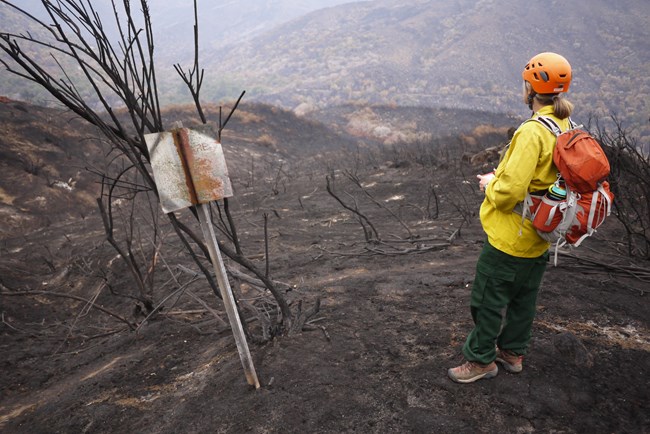
Photo courtesy of Mitch Allen
After the Fire – What do we need to know?
As fires increase in size, severity, and frequency, we have all become familiar with the work of Burned Area Emergency Response teams – subject matter experts who come in to help identify critical needs for stabilizing and rehabilitating park resources and infrastructure impacted by fire. This work is essential and establishes the first steps towards post-fire recovery. But what about research needs? What information should we be collecting to document and understand the ecological effect of fire on these ecosystems – and ultimately inform restoration and stewardship activities?
Fortunately, scientific partnership has always been strong in the Sierra Nevada. The National Park Service and US Geological Survey have partnered closely for decades in coordination with the US Forest Service and numerous universities to study chaparral, forest, wetland, and alpine ecosystems. These studies have improved our understanding of ecological processes and increased knowledge about the important ecological services provided to millions of Californians by Sierra Nevada watersheds. Studies over the decades have informed scientifically based resource management decisions and actions. Now such actions must consider the climate-related factors driving changes in how public lands and ecosystems are managed.
This winter, Linda Mazzu, retired Bryce Canyon National Park Superintendent (and former Yosemite Resource Management and Science Lead) and Andi Heard, Sierra Nevada Network Physical Scientist, took on the task of developing a post-fire research needs prospectus in order to identify and prioritize research questions and activities. This project is nearing completion and will soon be shared widely in order to focus the efforts of the scientific community on the highest priority needs – not only following the 2021 KNP Complex and Windy Fires, but in anticipation of the next fire to come.
iNaturalist: Making Your Natural History Observations Count
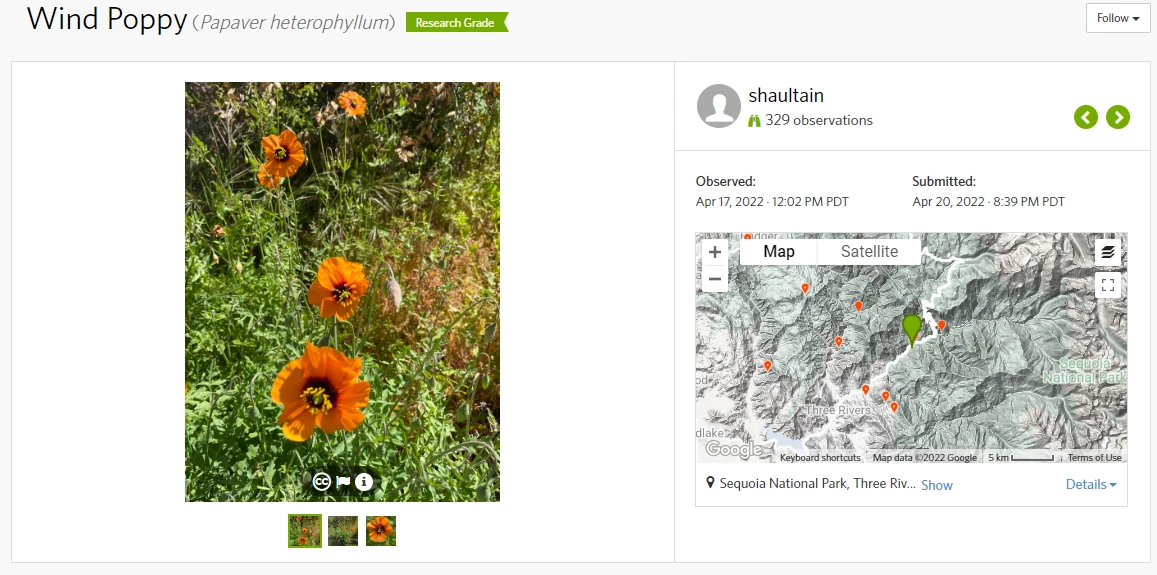
Want to make your natural history observations count? We’re encouraging everyone with a smartphone to load the iNaturalist app and join the global network of professional and amateur scientists to share pictures of what they see, no matter where they are. It’s super easy – if you use your phone to capture pictures of plants and animals, they are automatically geotagged (tied to a physical location). Not sure what it is you are looking at? The iNaturalist community of scientists will help identify the image, and if verified the observation becomes ‘research grade’. Then it can be used by specialists all over the world to build a more complete picture of biodiversity, whether in a remote wilderness or urban center.
In the Sierra Nevada Network parks, research grade wildlife observations are automatically added to our wildlife observations database, multiplying our observational power exponentially. To date, over 5 million people have submitted over 100,000,000 observations to iNaturalist! The California Native Plant Society has joined with iNaturalist to encourage community scientists to document ‘fire followers'— plants and animals that come in after a wildfire— within all the recent wildfire perimeters in the state. What this means for us is that observations from within the 2021 KNP Complex, 2020 Castle/SQF, or 2020 Creek fires, are part of a fire-follower dataset – including both pre and post fire observations. Check out the Fire Followers Campaign in iNaturalist or with the California Native Plant Society to learn more. Make your observations count!
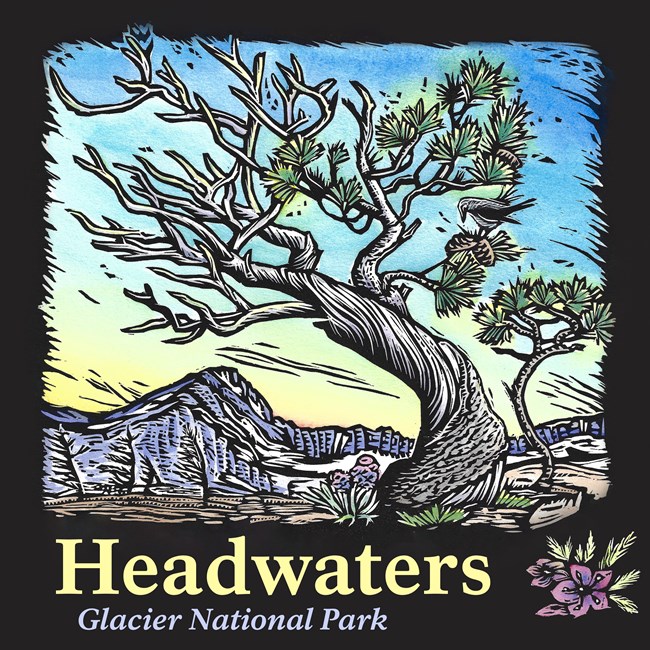
Headwaters Podcast: Finding a Path of Hope to Restoring Whitebark Pine
When national parks begin losing some of the species they were set aside to protect, it's important to understand the nature of the losses, and also to find hope that these species can still be protected or restored to places they've lived for millennia. Finding a variety of ways to share the stories of declining species like whitebark pine is critical to helping a larger number of people care about them and support efforts to save them. Check out this excellent podcast about whitebark pine in Glacier National Park and the people who are trying to restore them.
Season Two of Headwaters, a podcast from Glacier National Park, documents the generational effort to restore whitebark pine. It’s also a story about the purpose of national parks and our relationships with the places we love. Whitebark ask us, can people have a positive impact on nature? Find Headwaters at https://www.nps.gov/glac/learn/photosmultimedia/headwaters-podcast.htm or wherever you get your podcasts. This podcast was funded by the Glacier National Park Conservancy.
In the Sierra Nevada Network, whitebark pine have remained relatively healthy compared to those further north in the Cascades and Rocky Mountains. However, we are beginning to see signs of decline in some areas, and are starting to investigate why. Stay tuned for updates in future newsletters.
Network Book Club Reconvenes in Fall
During our Spring Network virtual meeting, when so many great presentations were shared, we also voted on our next Book Club choice. The book that won the most votes was The Home Place: Memoirs of a Colored Man's Love Affair with Nature by J. Drew Lanham. Book Club discussions typically take place on Teams during lunch hour. If you're interested in participating, please read this book over the summer, and the Network's Book Club will re-convene in the Fall. Please Email Linda Mutch if you are interested in participating and we will include you on a mailing list.
Sierra Nevada Inventory & Monitoring Network
47050 Generals Highway
Sequoia and Kings Canyon National Parks
Three Rivers, CA 93271
